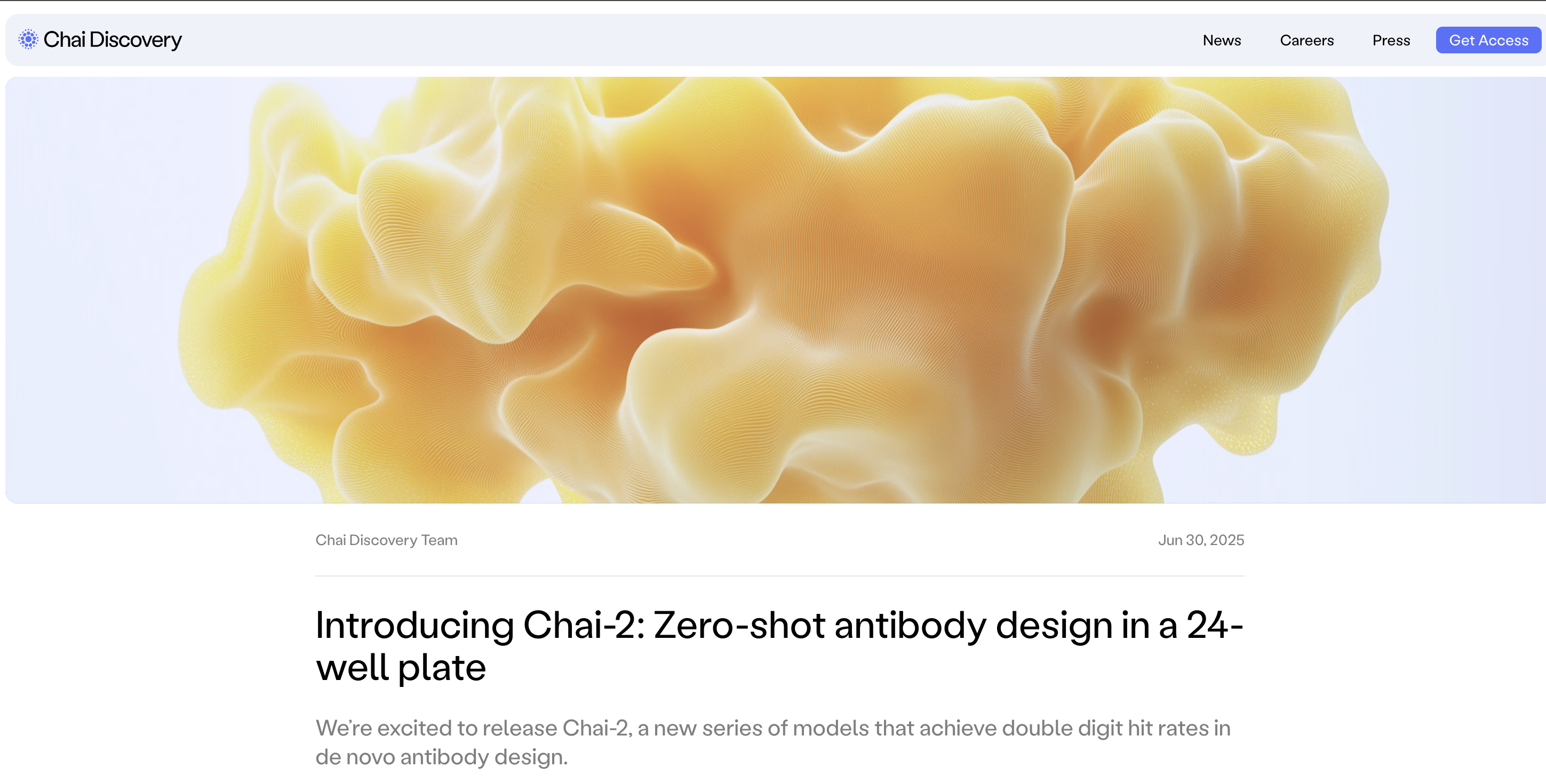Chai-2 AI Achieves 20% Success Rate in Zero-Shot Antibody Design

A groundbreaking development in artificial intelligence for drug discovery emerged this week with Chai Discovery's announcement of its Chai-2 model, which has demonstrated a 20% hit rate in zero-shot antibody design. This achievement, a significant leap forward in the field, was highlighted in a recent social media post by Packy McCormick, who noted it as a key reason for optimism in the tech and science sectors. The model's ability to design novel antibodies from scratch without prior data marks a substantial improvement over traditional methods.
Chai-2's success rate represents a more than 100-fold improvement over previous computational approaches, which typically yielded hit rates below 0.1%. This allows for the rapid identification of viable antibody candidates, compressing discovery timelines from months or years down to approximately two weeks. The model's multimodal generative architecture, integrating all-atom structure prediction and generative modeling, enables it to create novel and epitope-specific binders across various modalities, including scFv antibodies, nanobodies, and miniproteins.
In other significant advancements, Hermeus, an aerospace company, successfully conducted the first flight of its Quarterhorse Mk 1 uncrewed aircraft at Edwards Air Force Base. This milestone, achieved in just over a year from conception to flight-ready, validates the company's rapid, iterative development approach for high-speed and hypersonic aircraft. The flight focused on demonstrating high-speed takeoff and landing capabilities, with data being integrated into the development of the Quarterhorse Mk 2, slated for flight later this year.
Further contributing to a week of notable progress, Fuse Energy Technologies announced the publication of its FAETON research in Nature Scientific Reports. The study details experimental results from FAETON-I, a 100 kV dense plasma focus device that consistently generates deuterium-deuterium (D-D) neutron yields of 2.5 x 10^10, with peak yields reaching 8 x 10^10 neutrons. This performance is described as outperforming the universal neutron scaling law, showcasing its potential for radiation effects testing and future fusion energy applications.
Meanwhile, in the financial market, collaborative design software firm Figma has filed for an Initial Public Offering (IPO) on the New York Stock Exchange under the ticker "FIG." This move comes nearly two two years after its $20 billion acquisition by Adobe fell through due to regulatory concerns. Figma's S-1 filing revealed robust financial performance, with Q1 2025 revenue increasing 46% year-over-year to $228.2 million and net income reaching $44.8 million. The company aims to raise up to $1.5 billion, signaling a potential opening of the tech IPO window. As McCormick stated in his tweet, "Figma opens IPO window with beautiful numbers."